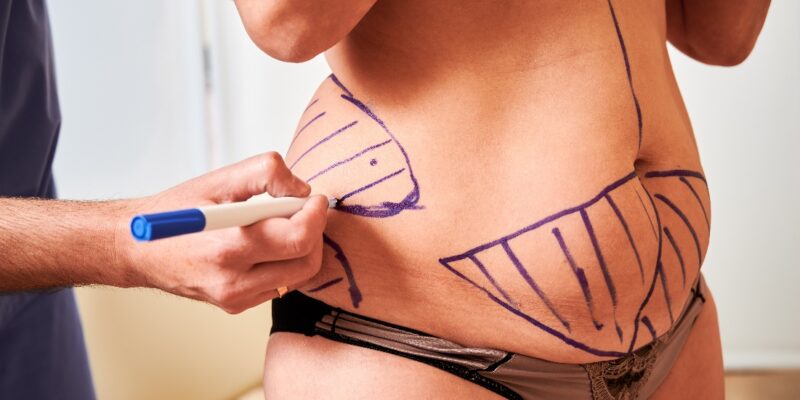
What You Should Know About Tummy Tuck

What You Should Know About Tummy Tuck:
Are you struggling with excess abdominal skin and weakened muscles despite regular exercise and a healthy lifestyle? If so, you may have considered a tummy tuck. Tummy tuck surgery, also known as abdominoplasty, is a popular cosmetic procedure that can help you achieve a flatter and more toned abdominal profile. In this blog, we will delve into what a tummy tuck entails, who can benefit from it, and what to expect during the procedure and recovery.
A tummy tuck is a surgical procedure that aims to improve the appearance of the abdomen by removing excess skin and fat while also tightening the underlying muscles. This procedure is particularly beneficial for individuals who have experienced significant weight loss or pregnancy, which can lead to stretched abdominal muscles and loose, sagging skin that is resistant to diet and exercise.
Who Is a Suitable Candidate For Tummy Tuck?
Tummy tuck surgery is not a weight loss procedure but rather a body contouring technique. It is best suited for individuals who have reached a stable weight and are committed to maintaining a healthy lifestyle. Suitable candidates for a tummy tuck typically include:
- Individuals with excess abdominal skin and fat: If you have loose or sagging skin in the abdominal area that does not respond to exercise or diet, a tummy tuck can help remove the excess skin and create a more streamlined appearance.
- Women post-pregnancy: Pregnancy can cause abdominal muscles to stretch and separate, resulting in a permanent “pooch.” A tummy tuck can repair the separated muscles and restore a firmer abdominal contour.
- Individuals who have undergone significant weight loss: After significant weight loss, excess skin and tissue can hang around the abdomen. A tummy tuck can eliminate this excess skin and provide a more proportionate and toned midsection.
Tummy Tuck Surgery and Recovery Process:
During a tummy tuck procedure, your plastic surgeon will make an incision typically spanning from hip to hip, just above the pubic area. The length and shape of the incision may vary depending on the amount of correction needed. Through this incision, the surgeon will remove excess skin and fat, tighten the abdominal muscles, and reposition the remaining skin for a smoother and flatter appearance.
Following the surgery, you can expect a recovery period of several weeks. Initially, you may experience some discomfort, swelling, and bruising, which can be managed with prescribed pain medications and compression garments. It is important to follow your surgeon’s post-operative instructions diligently, including restrictions on physical activity and proper wound care, to optimize healing and minimize complications.

How To Minimize Pain After Tummy Tuck Surgery?
- Follow your surgeon’s recommended cleaning routine for the incision area to prevent infection.
- Take prescribed pain medication as directed to manage any discomfort.
- Wear compression garments as instructed to reduce swelling and support the healing tissues.
- Keep yourself hydrated by drinking plenty of water.
- Eat a healthy and balanced diet to support the healing process.
- Get plenty of rest and avoid strenuous activities, including heavy lifting and intense exercise, for the recommended duration.
- Attend follow-up appointments as scheduled to monitor your progress and address any concerns.
Things To Avoid After Tummy Tuck Surgery:
- Do not smoke or use nicotine products, as they can impair the healing process and increase the risk of complications.
- Avoid exposing the incision area to direct sunlight until it has fully healed and use sunscreen if necessary.
- Refrain from taking any medications, supplements, or herbal remedies without consulting your surgeon.
- Do not ignore any signs of infection, such as increased pain, redness, swelling, or discharge from the incision site. Contact your surgeon immediately if you suspect an infection.
- Avoid excessive bending, twisting, or straining, as it can put unnecessary stress on the healing tissues.
- Do not remove or manipulate any drains or sutures without the guidance of your surgeon.
- It is important to note that these guidelines are general in nature, and your surgeon’s specific instructions may differ. Always consult with your plastic surgeon for personalized post-operative care instructions and follow them diligently to ensure a smooth recovery and achieve the best possible results.

Benefits and Considerations of Tummy Tuck:
A tummy tuck can offer numerous benefits, both physical and emotional. Some of the advantages include:
- Improved abdominal contour: By removing excess skin and fat and tightening the underlying muscles, a tummy tuck can create a flatter and more defined abdominal profile.
- Increased self-confidence: Achieving a more proportionate and toned midsection can boost self-esteem and body confidence.
While a tummy tuck can provide transformative results, it is important to consider the potential risks and limitations. These may include scarring, the possibility of complications such as bleeding or infection, and the need for a comprehensive recovery period. Consulting with a skilled and experienced plastic surgeon is crucial to fully understand the procedure and determine if it aligns with your goals and expectations.
Can I Get Liposuction and A Tummy Tuck in The Same Surgery?
A tummy tuck can often be combined with liposuction to achieve comprehensive body contouring results. Liposuction is a surgical procedure that targets localized pockets of fat, while a tummy tuck focuses on removing excess skin and tightening abdominal muscles. By combining these procedures, patients can address both skin laxity and stubborn fat deposits in the abdominal area, resulting in a more sculpted and toned midsection. The liposuction component can enhance the overall contouring effect of the tummy tuck, providing more precise and refined results. However, it is important to consult with a qualified plastic surgeon to determine the suitability of combining these procedures based on individual needs and goals. The surgeon will evaluate factors such as overall health, skin elasticity, and the extent of correction required to determine the best approach for achieving optimal outcomes.
Bu gönderiyi Instagram’da gör




OHPLFlcmQefYzaMu